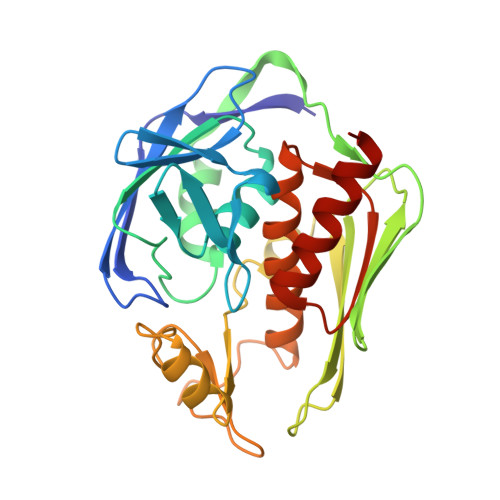Design and synthesis of potent Gram-negative specific LpxC inhibitors.
Faruk Mansoor, U., Vitharana, D., Reddy, P.A., Daubaras, D.L., McNicholas, P., Orth, P., Black, T., Arshad Siddiqui, M.(2011) Bioorg Med Chem Lett 21: 1155-1161
- PubMed: 21273067
- DOI: https://doi.org/10.1016/j.bmcl.2010.12.111
- Primary Citation of Related Structures:
3P76 - PubMed Abstract:
Antibiotic resistant hospital acquired infections are on the rise, creating an urgent need for novel bactericidal drugs. Enzymes involved in lipopolysaccharide (LPS) biosynthesis are attractive antibacterial targets since LPS is the major structural component of the outer membrane of Gram-negative bacteria. Lipid A is an essential hydrophobic anchor of LPS and the first committed step in lipid A biosynthesis is catalyzed by a unique zinc dependent metalloamidase, UDP-3-O-(R-3-hydroxymyristoyl)-N-acetylglucosamine deacetylase (LpxC). LpxC is an attractive Gram-negative only target that has been chemically validated by potent bactericidal hydroxamate inhibitors that work by coordination of the enzyme's catalytic zinc ion. An exploratory chemistry effort focused on expanding the SAR around hydroxamic acid zinc-binding 'warheads' lead to the identification of novel compounds with enzyme potency and antibacterial activity similar to CHIR-090.
Organizational Affiliation:
Department of Chemistry, Merck Research Laboratories, 320 Bent Street, Cambridge, MA 02141, USA. [email protected]

















